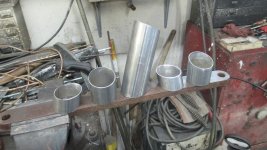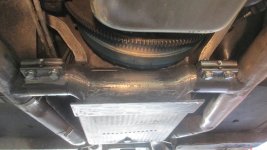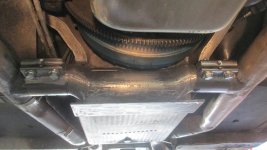toobroketoretire
Banned
My 454" powered '71 had 2-1/2" dual exhaust and home made "performance" mufflers. Last summer I installed an h-pipe to see if it would quiet the exhaust noise down and maybe provide a little gain in power. Knowing an h-pipe had to be as close to the engine as possible to provide any meaningful gain in power I installed mine right under my torque converter. I used my AutoCad program to design it with a 3/4' drop so it would clear the bottom of my torque converter and used stainless steel "band" clamps to seal it. It did quiet the exhaust noise down maybe 10% as both of the mufflers now share every exhaust pulse. My starter makes a lot more noise with the dust cover removed but it's not enough to annoy me.








